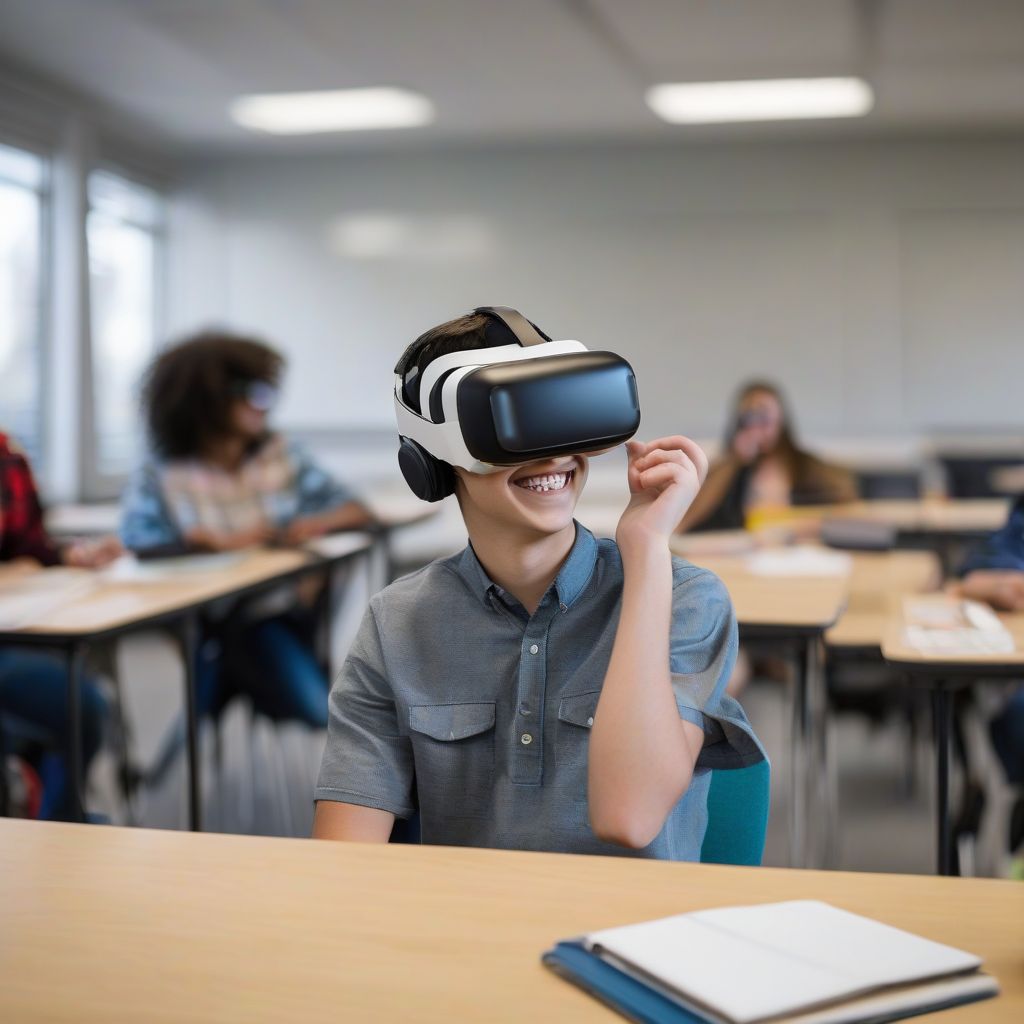Have you ever dreamt of exploring the Colosseum in ancient Rome without leaving your classroom? Or perhaps diving into the depths of the ocean to study marine life up close? Virtual Reality (VR) is making these dreams a reality, revolutionizing the way we learn and experience the world around us.
But creating truly effective VR educational content requires more than just strapping on a headset. It demands a thoughtful approach that leverages the unique capabilities of this immersive technology. As a nutritionist and meal prepping coach, I understand the power of engaging experiences in driving positive change. That’s why I’m excited to share some expert tips on how to create VR educational content that captivates learners and unlocks their full potential.
Understanding the Power of VR in Education
Before we dive into the tips, let’s take a moment to appreciate what makes VR such a game-changer in education:
- Immersive Learning: VR transports learners from their desks to the heart of the subject matter, creating a sense of presence and engagement that traditional methods simply can’t match. Imagine exploring the human body from the inside out or traveling through time to witness historical events firsthand.
- Experiential Learning: VR allows learners to actively participate in scenarios rather than passively absorbing information. They can conduct virtual science experiments, practice real-world skills in a safe environment, or step into the shoes of historical figures to gain a deeper understanding of different perspectives.
- Personalized Learning: VR experiences can be tailored to individual learning styles and paces, catering to different needs and abilities. Learners can revisit concepts as many times as needed, explore areas of interest in more detail, and receive personalized feedback.
Tips for Creating Effective VR Educational Content
Now, let’s explore the key ingredients for creating VR experiences that truly transform learning:
1. Define Clear Learning Objectives
Just like any successful recipe starts with a clear vision, effective VR educational content begins with well-defined learning objectives. Ask yourself:
- What specific knowledge or skills do you want learners to gain from the VR experience?
- How will VR help achieve these objectives more effectively than other methods?
For example, if you’re creating a VR experience about the solar system, your objective might be for learners to understand the relative sizes and distances of planets, identify their unique characteristics, and explain the concepts of orbits and gravity.
2. Design for Engagement and Interaction
VR excels at creating immersive experiences, so leverage this strength by designing content that actively engages learners.
- Incorporate Interactive Elements: Allow learners to manipulate objects, make choices that influence the narrative, and receive feedback based on their actions. Interactivity fosters a sense of agency and makes learning more memorable.
- Tell a Story: Humans are naturally drawn to narratives. Weaving your educational content into a compelling story can enhance engagement and emotional connection. Even a simple narrative arc can make a world of difference.
- Use Gamification Wisely: Elements like challenges, rewards, and progress trackers can motivate learners and make the experience more enjoyable. However, avoid overusing gamification, as it can distract from the learning goals.
3. Consider Cognitive Load
When learners are bombarded with too much information or complex interactions, it can lead to cognitive overload, hindering their ability to process and retain information.
- Start Simple: Begin with a clear and concise introduction to the VR experience. Avoid overwhelming learners with too many instructions or stimuli right away.
- Chunk Information: Break down complex topics into smaller, digestible chunks. Introduce new concepts gradually and provide ample opportunities for learners to practice and apply what they’ve learned.
- Provide Guidance: Offer clear instructions and visual cues to guide learners through the experience. Consider using voiceovers or on-screen prompts to provide support when needed.
4. Create Realistic and Relevant Scenarios
VR thrives on its ability to transport learners to different environments and situations. However, for the experience to be truly effective, it needs to feel realistic and relevant.
- Conduct Thorough Research: Ensure the accuracy and authenticity of your VR content, especially when depicting historical events, scientific concepts, or cultural experiences.
- Use High-Quality Visuals and Sound: Realistic visuals and immersive sound design significantly enhance the sense of presence and immersion in VR. Invest in high-quality assets that create a believable and engaging experience.
- Connect to Real-World Applications: Whenever possible, highlight how the knowledge and skills gained in the VR experience can be applied to real-world situations. This connection reinforces the relevance and value of the learning.
5. Prioritize Accessibility and Inclusivity
VR experiences should be accessible to all learners, regardless of their physical abilities, learning differences, or cultural backgrounds.
- Provide Options for Movement and Interaction: Offer alternative control schemes to accommodate learners with different physical abilities. Consider options for seated experiences, teleportation, and customizable comfort settings.
- Use Clear and Concise Language: Avoid using jargon or technical terms that might not be familiar to all learners. Provide definitions or explanations as needed.
- Offer Language and Subtitle Options: If possible, provide the VR experience in multiple languages or offer subtitles to accommodate learners with different language backgrounds.
 VR Headset for Education
VR Headset for Education
6. Test, Iterate, and Improve
Creating effective VR educational content is an iterative process. Just like perfecting a recipe, it requires experimentation, feedback, and refinement.
- Conduct User Testing: Gather feedback from target users throughout the development process. Observe how they interact with the VR experience, identify any usability issues, and solicit suggestions for improvement.
- Track Learner Progress: Implement mechanisms to track learners’ progress and assess their understanding of the material. This data can help you identify areas where the content may need adjustments.
- Continuously Update and Improve: The world of VR is constantly evolving, with new technologies and best practices emerging regularly. Stay informed about the latest advancements and be prepared to update and improve your VR content over time.
Conclusion
Virtual Reality offers an unprecedented opportunity to create engaging and effective educational experiences that were once unimaginable. By following these tips, you can harness the power of VR to transport learners to new worlds, foster deeper understanding, and ignite a passion for lifelong learning.
As you embark on your journey of creating VR educational content, remember to prioritize the needs of your learners, embrace the iterative design process, and never stop exploring the boundless possibilities of this transformative technology.
What are your thoughts on the future of VR in education? What exciting applications do you envision? Share your insights in the comments below!
[amazon bestseller=”virtual reality headset for education”]
